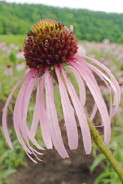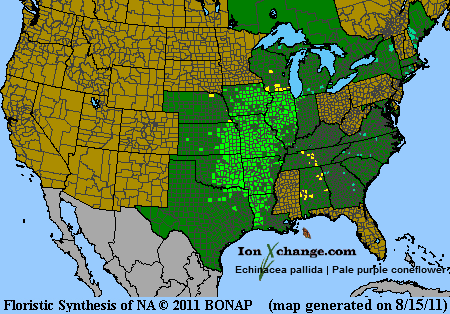 Loading... Please wait...
Loading... Please wait...- Home
- SEEDS
- SEED MIXES
- BUY PLANTS
- Info Request
-
Educational Videos
- Greenhouse Transplanting Demonstration
- Native Seed Cleaning demonstration at Ion Exchange Native Seed and Plant Nursery
- Attracting Butterflies
- Bidens - Bidens cernua Harvest Video
- Big Blue Stem Harvest
- Butterfly Milkweed Video
- Button Blazingstar - Liatris aspera Video
- Buttonbush - Cephalanthus occidentalis Video
- Canada Anemone - Anemone canadensis Harvest Video
- Cardinal Flower - Lobelia cardinalis Video
- Control Burn - Wildflower Field
- Cream Gentian - Gentiana flavida
- Culver's Root - Veronicastrum virginicum Video
- Cup Plant - Silphium perfoliatum Video
- Dormant Seeding | Planting
- Earthyman's Favorite Wildflowers Video
- Eco-Friendly Golf Course Seed Mix
- Floating Islands
- Fringed Loosestrife - Lysimachia ciliata Video
- Giant Yellow Hyssop - Agastache nepetoides Video
- Indiangrass - Sorghastrum nutans Video
- Iowa Prairie Partner Program
- Leadplant - Amorpha canescens (Potted) Video
- Meadow Blazingstar - Liatris ligulistylis
- Midland Shooting Stars - Dodecatheon meadii Video
- Native Plant Nursery Field Irrigation Experiment
- Nodding Onion - Allium cernuum Video
- Ohio spiderwort - Tradescantia ohiensis Video
- Old Man's Beard - Clematis virginiana blooms Video
- Oxeye Sunflower - Heliopsis helianthoides Video
- Prairie Spiderwort - Tradescantia bracteata
- Purple Coneflower - Echinacea purpurea Video
- Rain Garden or Water Garden Video
- Rattlesnake Master - Eryngium yuccifolium Video
- Riverbank Stabilization - Wetland Plants
- Rose Mallow - Hibiscus militaris Video
- Rosinweed - Silphium integrifolium Video
- Royal Catchfly - Silene regia
- Showy Tick Trefoil - Desmodium canadense Video
- Sneezeweed - Helenium autumnale Video
- Swamp Betony - Pedicularis lanceolata Video
- Swamp Milkweed - Asclepias incarnata Video
- Sweet Blackeyed Susan - Rudbeckia subtomentosa Video
- Tall Coreopsis - Coreopsis tripteris Video
- Urban Butterfly Garden
- Wild Bergamot - Monarda fistulosa Video
- Wild Geranium - Geranium maculatum Harvest
- Wild Goldenglow - Rudbeckia lanciniata Video
- Wild Petunia - Ruellia humilis Harvest Video
- Woodland Knotweed - Polygonum virginianum Video
- Yellow Coneflower - Ratibida pinnata Video
- Blog
- Resources
- Policies
Contact Us
Phone:
563-419-0837
or 563-535-7231
Email:
hbright@ionXchange.com
Browse Products
Add to Wish List
You Recently Viewed...
Our Newsletter
Product Description
Echinacea from the Greek word for "sea urchin" or "hedgehog" referring to the spiny chaff at the center of these flowers. Pallida is from the latin word for "pale".
Perennial; reaches 2 to 3 feet; leaves are mostly basal and elongated ovals up to 7 inches long. Single, pale purple flowers top a stem with a few stiff hairs and few leaves. Favors open prairies and dry open woods of the Tallgrass region; occasionally found along undisturbed roadsides. Blooms from May to July.
Native Americans of the Plains are said to have used Echinacea for more medicinal purposes than any other plant group. The root (chewed or brewed in a tea) was used for snakebites, spider bites, cancers, toothaches, burns, hard-to-heal sores, colds and flu. Current science confirms a cortisone-like activity as well as insecticidal, bactericidal and immuno-stimulant activites. It is still considered a nonspecific immune system stimulant. There are over 300 pharaceutical preparations made in Germany including extracts, salves and tinctures used for wounds, herpes, sores, canker sores and throat infections. It's also a preventative for colds and flu. An old folk remedy claims success as a treatment for brown recluse spider bites, but it is not known how the plant was prepared for this remedy.
| Sun Exposure | Prairie, Savanna |
| Soil Moisture | Mesic, Dry Mesic, Dry |
| Bloom Time | Summer June, July |
| Bloom Color | White |
| Max Height | 3 feet |
| Wetland Code | UPL |
| Germ Code | C(90),M |
| Seeds Per Packet | |
| Seeds Per Ounce |
Edible Uses: Unknown
Medicinal Uses: Plants in this genus were probably the most frequently used of N. American Indian herbal remedies, though this species is considered to be less active than E. angustifolim. They had a very wide range of applications and many of these uses have been confirmed by modern science. The plant has a general stimulatory effect on the immune system and is widely used in modern herbal treatments. There has been some doubt over the ability of the body to absorb the medicinally active ingredients orally (intravenous injections being considered the only effective way to administer the plant), but recent research has demonstrated significant absorption from orally administered applications. In Germany over 200 pharmaceutical preparations are made from Echinacea. The roots and the whole plant are considered particularly beneficial in the treatment of sores, wounds, burns etc, possessing cortisone-like and antibacterial activity. The plant was used by N. American Indians as a universal application to treat the bites and stings of all types of insects. An infusion of the plant was also used to treat snakebites.
The plant is adaptogen, alterative, antiseptic, depurative, diaphoretic, digestive, sialagogue. It is harvested in the autumn and dried for later use.
Herbal Uses: Unknown













